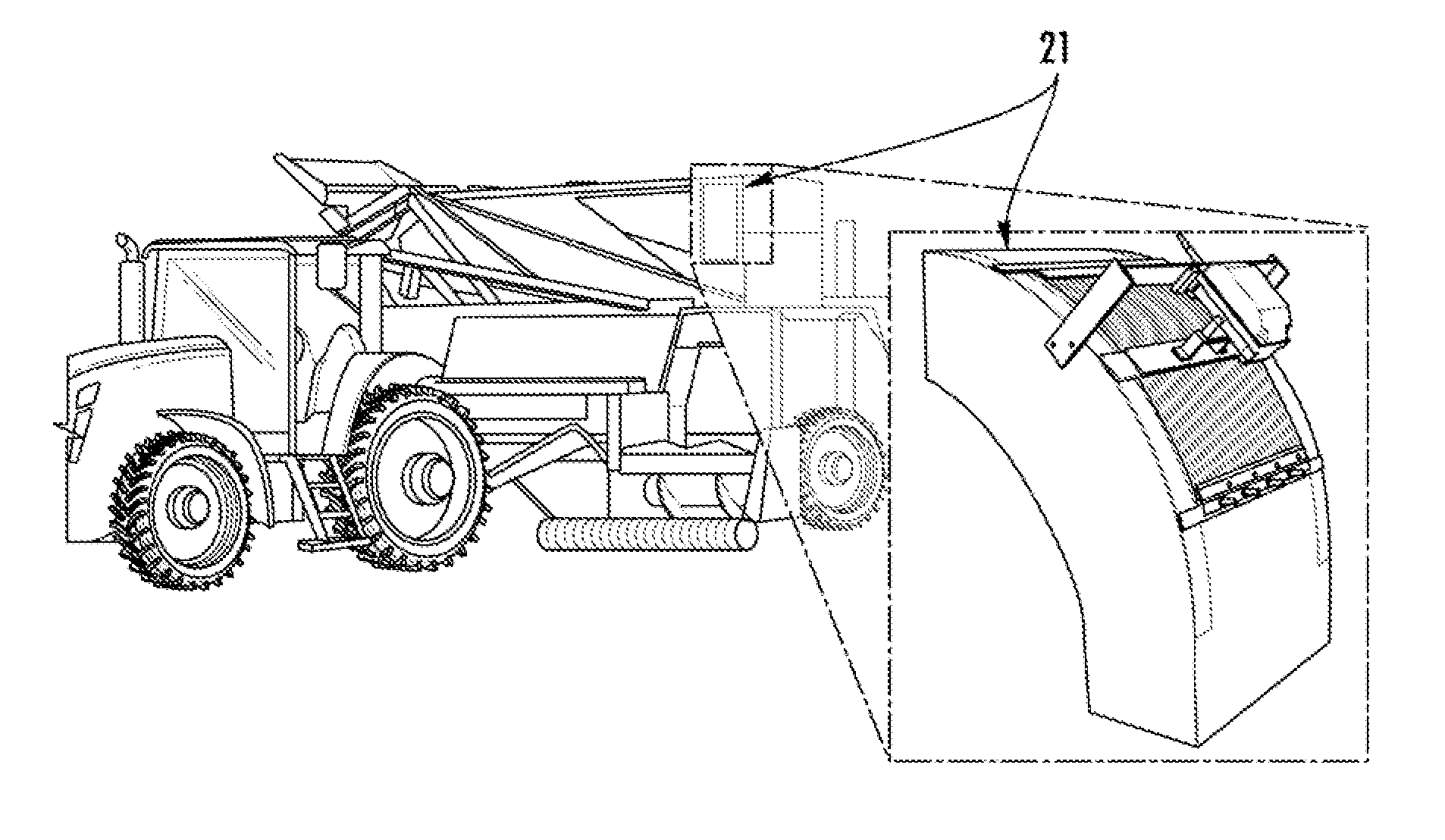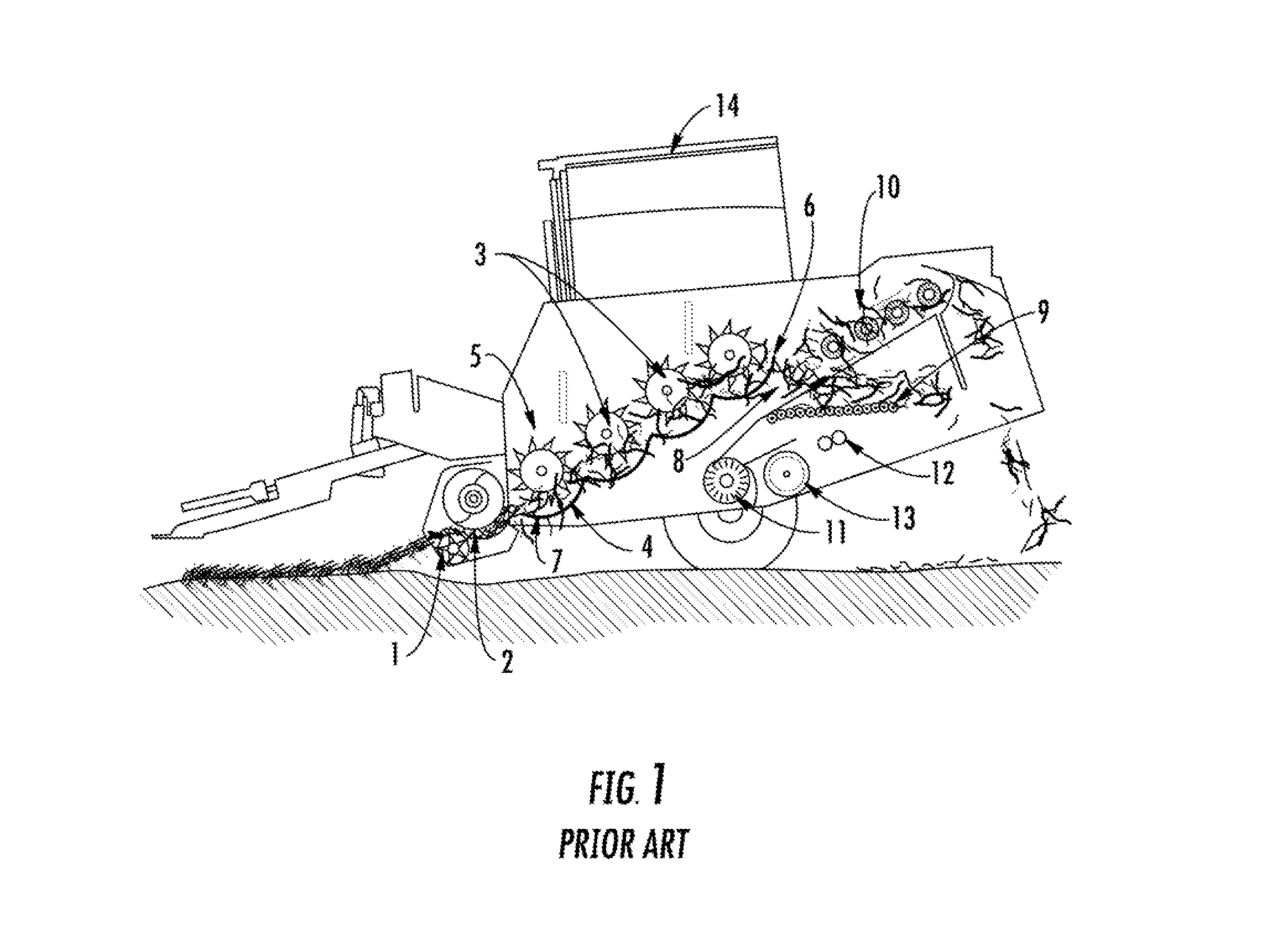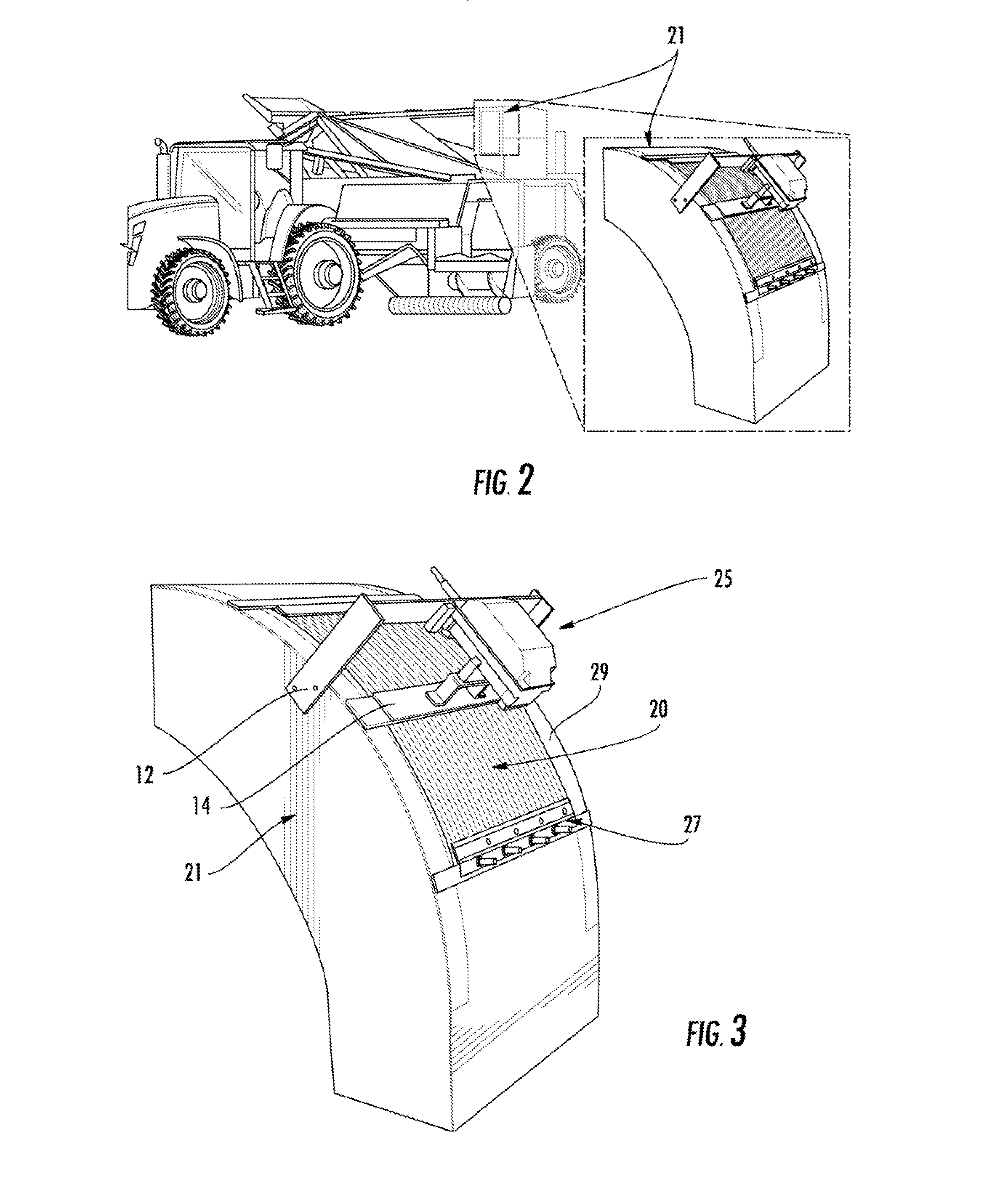Impact Mass Flow Sensor For Monitoring Peanut Harvest Yields
a mass flow sensor and monitoring technology, applied in the direction of liquid/fluent solid measurement, instruments, agriculture tools and machines, etc., can solve the problems of poor in-load resolution relative to yield monitoring technologies available, system cannot be adapted for production use, and cannot quantify whether what is working or not working. to achieve the effect of improving correlation
- Summary
- Abstract
- Description
- Claims
- Application Information
AI Technical Summary
Benefits of technology
Problems solved by technology
Method used
Image
Examples
example 1
[0083]An Ag Leader® 4000201 (Ag Leader® Technology, Ames, Iowa) impact or “grain” sensor connected to an Ag Leader® Integra monitor was adapted to a four row Bush Hog 9004 (Bigham Brothers, Inc., Lubbock, Tex.) pull-type peanut combine. The load cell of the impact monitor was attached to the exterior of the topmost portion of the clean peanut delivery chute of the combine. The impact plate monitor was located outside of a 90° bend where the peanuts are deflected into the hopper basket as shown in FIG. 2. The impact plate was removed from the bend and the load cell was removed from the sheet metal housing used for mounting in a grain combine. The load cell was fixed to a “floating” section of bar screen on the delivery chute and to the side walls of the peanut basket via a mounting bracket as depicted in FIG. 3. The bar screen was fixed to the chute along its lower (upstream) edge by a piano hinge to restrict motion when peanuts were being deflected into the hopper basket. Installati...
example 2
[0101]An Ag Leader® 4000201 (Ag Leader® Technology, Ames, Iowa) impact plate was mounted on an Amadas 2108 pull type peanut combine and an Ag Leader® Integra monitor was paired with this sensor. Installation and setup for this system was similar to that described Example 1 and shown in FIG. 2. Two configurations of the bar screen attached to the impact plate sensor were employed: one where the bar screen was allowed to float in its position with no hinge (FIG. 8) and one where the piano hinge position was moved to the downstream side of the airflow (FIG. 6), opposite that shown in FIG. 5. In the configuration including the hinge, the bar screen was made to overlap on the outside of the duct on the upstream side of the airflow. The bar screen was not allowed to touch the sides of the duct in either configuration, providing 0.64 cm (0.25 in) or less clearance on all sides, except where the hinge was mounted. Also, the shaft speed sensor that was already installed on the peanut combine...
example 3
[0109]Two combines were set up in the same manner with the same components. A series TDH30 pressure transducer (Transducers Direct, Cincinnati, Ohio) was fitted on the hydraulic circuit of the offloading cylinders on Amadas 2108 and 2110 peanut combines (FIG. 20A), indicating hydraulic pressure in the cap ends of the two parallel cylinders that tilt the basket for dumping the load to a wagon, trailer, or dump cart. The pressure transducers were calibrated against a model AFC-5M-25 pressure gauge (DiscountHydraulicHose.com, Philadelphia, Pa.) as shown in FIG. 21A using pressure generated from a model 60726 portable hydraulic power kit (Harbor Freight Tools Co., Camarillo, Calif.).
[0110]Model AH226124 rotary potentiometer assemblies (Deere & Company, Moline, Ill.) were attached between the supporting frames and the baskets of the peanut combines (FIG. 20B). The rotary potentiometers were calibrated against basket angle relative to the combines (FIG. 21B) using a model 95998 magnetic d...
PUM
 Login to View More
Login to View More Abstract
Description
Claims
Application Information
 Login to View More
Login to View More - R&D
- Intellectual Property
- Life Sciences
- Materials
- Tech Scout
- Unparalleled Data Quality
- Higher Quality Content
- 60% Fewer Hallucinations
Browse by: Latest US Patents, China's latest patents, Technical Efficacy Thesaurus, Application Domain, Technology Topic, Popular Technical Reports.
© 2025 PatSnap. All rights reserved.Legal|Privacy policy|Modern Slavery Act Transparency Statement|Sitemap|About US| Contact US: help@patsnap.com



